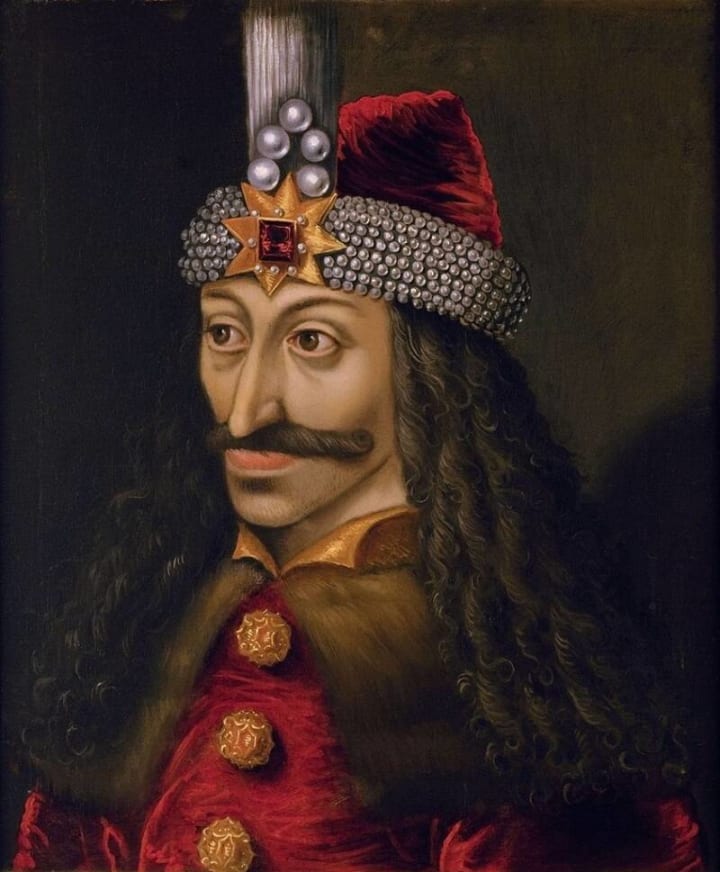Vampire Legends from the History
Vampires

For millennia, mankind has been haunted by vampire myths. Some of them are based on true events, which makes them creepier. Here are some terrifying urban legends that proved out to be true for more strange stories.
Elizabeth Bathory

Whether you believe it or not, vampire history begins with the most prolific serial murderer of all time: Elizabeth Bathory. Also known as "The Blood Countess," she was born into the renowned Bathory family, which belonged to the kingdom of Hungary. The family is known for its ties to Stefan Bathory, King of the Polish-Lithuanian Commonwealth and Duke of Transylvania.
At the age of 11, Bathory became married to Ferenc Nadasdy. She adopted the name of her husband when they got married and gave her the full name of Countess Elizabeth Bathory Nadasdy. As a wedding gift to the Nadasdy family, they presented them with Csejte Castle.
Even though it might appear like a fairytale, however, the Countess of Bathory was often isolated to take care of the property as her husband, an officer in the rank of Chief, and the Commander of Hungarian troops participated in the battle with the Ottomans. While she was away, Bathory spent time with her aunt, who was a witch, and her uncle, who was an alchemist who worshipped the devil.
In the 29 years of Bathory's marriage to Nadasdy, the couple had five children, three daughters as well as two boys.
Elizabeth Bathory's Blood obsession
Bathory became bored with her husband's absence. She began to impose harsh punishments on her employees. Remember, during this time, it was common and even encouraged to discipline household staff.
According to the legend, Nadasdy enjoyed torturing and helped Bathory's behavior by teaching new methods to inflict pain. However, following her husband's passing, she escalated her methods of torture to a whole new degree. She used barbed lashes, a thick cudgel, as well as iron tongs. In truth, there's an endless list of her horrific plans and Bathory famously invented her most favored device, a cage dubbed"the Iron Virgin. The design was inspired by her idol, Iron Maiden. Her cage was designed to look like a woman's body and was fitted with blades.
The story began when Bathory was doing a brutal act against one of her female servants. The bloody spots fell on her body, and Bathory discovered that her skin was "tightened." Then she began to become addicted to blood.
Then she was to be known as the Iron Virgin, soaked in the blood and sweat of female virgins. And not only that, she was fond of gnawing on chunks of female bodies.
Bathory's fascination with her eternal youth grew to the point that she was outshining the normal girls of the village. Without a doubt, Bathory lured in young girls from different high-society families. This was the moment that the Hungarian King knew he needed to place her in the dock for trial.
The trail
On arrival at Csejte Castle, the bodies of young girls were discovered. Some were burned halfway, still alive, and missing pieces of flesh on their faces.
Bathory and her associates were charged with just 80 charges of murder, and despite the overwhelming evidence against her-notably her journal, in which she recorded the names of her victims, bringing the total number of girls killed to 650-she was spared the death penalty. In fact, due to her bloodline as a royal, she was allowed to stay at her castle with a price.
In prison, Bathory was bricked into an area that was without doors or windows. There was a small window for water and food to be provided to her. She was kept in a cell. Later, after three years, she died.
The Dracula

In 1897, the writer Bram Stoker published the novel Dracula, which is the classic tale of a vampire called Count Dracula who feeds off human blood, pursuing his victims before murdering them in the dead of night.
The character of Dracula in the novel that was hailed by critics of the time as the "most thrilling, bloody story" of the 20th century was Stoker's creation. However, many believe that Dracula's blood-sucking villain was in the spirit of Vlad Impaler. He was the frightful leader of Wallachia (part of modern-day Romania) during the middle of the 1400s.
Vlad III earned his fearsome reputation for impaling over twenty thousand people and killing more than 60, 000 others in his bloody rule. Vlad III was believed to dine with his enemies impaled while dipping his bread into the blood of their enemies.
However, while the tales about Dracula the "real Dracula" have surely been embellished throughout time, the real story of Vlad the Impaler is much more terrifying than anything that Bram Stoker would possibly have dreamed up.
Since the record of history isn't always reliable regarding the history of Vlad the Impaler (otherwise called Vlad III), we are only aware that Vlad III was born between 1428 and 1431, during an era of turmoil in Wallachia.
His mother, Queen Margret, was a member of a Moldavian royal family, as was his father, Vlad II Dracul. Vlad II Dracul. The surname is a reference to "dragon" which was granted to Vlad II upon his induction into the Christian organization called the Order of the Dragon. Vlad was a young man. Vlad also had two siblings: Mircea Radu and Mircea. Radu.
Due to the proximity of Wallachia to the conflicting factions of Christian-ruled Europe and the rule of Muslims in the Ottoman Empire, Dracul's land was always the scene of conflict.

In 1442, the Ottomans requested an official conference that included Vlad Dracul. He saw an opportunity to instruct his sons on diplomatic skills, and so he took Vlad III and Radu with him.
However, Dracul and his two sons were seized and taken hostage by the Ottoman diplomatic corps instead. The captors assured Dracul that he'd be released. However, he would have to let his sons go.
Dracul believed it was the most secure option for his family and was in agreement. It was a blessing for Vlad III as well as his son. While they were held hostage, both princes were given instruction in philosophy, science, and the art of war.
However, the situation was worse in the home country. A plot organized by a local warlord known as the boyar defeated Dracul. In 1447, Dracul was executed in the swamps surrounding his house, while his youngest son was blinded, tortured, and later buried alive.
Vlad III was freed soon after the demise of his family, and at this point, Vlad III was able to take on the title Vlad Dracula, meaning son of the dragon. After his return to Wallachia the next day, Vlad III became an unruly ruler who soon earned his nickname Vlad the Impaler in a shocking manner.
Vlad The Impaler's Rise to Power and Adoption of Brutality

After 1448, Vlad was back in Wallachia to reclaim his throne from Vladislav II, the man who had succeeded his father. Vlad succeeded, however, and after only several months after his deposal, Vladislav returned to take back the throne. However, in 1456, Vlad was back in 1456 with an army, with the support of Hungary as well as Hungary. He was then able to take the throne away from Vladislav for the second time.
The legend says that Vlad personally executed his rival, Vladislav, in battle. When he ascended to his father's throne, his reign of terror officially began.
Many historians believe that the gruesome deaths of his family members were what transformed Vlad III into Vlad Tepes, who was the first Romanian name for Vlad the Impaler. According to some accounts, Vlad was beaten and tortured while he was imprisoned under the Ottomans and this could be the place where he was taught the custom of impaling enemies.
When he returned to the throne, Vlad had enemies of his own to contend with. There were those in Wallachia who believed that Vladislav II was a better leader, which led to protests across the region. The new monarch was aware that he needed to establish his authority over the populace. He planned to host a dinner and invite his adversaries.
It wasn't for long before the party was bloody. Vlad's guests who were dissident were stabbed to death, and their twitching bodies were impaled with spikes.
In the years following, Vlad's violent reputation only grew as he was able to defend his throne and shattered his foes repeatedly by using the most brutal methods.
The Real Dracula's Terror Reign

Vlad Impaler, a brutal ruler. However, a large portion of Christian Europe believed in his fierce, even if the brutal defense of Wallachia against various incursions by Muslim Ottoman forces.
In fact, Pope Pius II expressed his admiration for the famously violent ruler's military feats. Threat to Europe was considered to be an attack on Christendom and, consequently the Pope.
Although the true Dracula brought security and stability to a region in need, Vlad III was still was prone to enjoying his brutality. When he was fighting one of his successful battles in 1462 against Ottoman Turks in 1462, Vlad wrote in a letter to one of his allies:
“I have killed peasants, men and women, old and young, who lived at Oblucitza and Novoselo, where the Danube flows into the sea… We killed 23,884 Turks, without counting those whom we burned in homes or the Turks whose heads were cut by our soldiers… Thus, your highness, you must know that I have broken the peace.”
Impalement was, without doubt, Vlad Impaler's method of murder that he preferred. In impalement, a pole made of metal or wood was swung through the body, starting in the vagina or rectum to slowly cut through the human body, until it was pushed out of the victim's mouth neck, or shoulders.
Sometimes, the pole was rounded to ensure that it could pass through the body without causing damage to many organs in the body, thus making the torture more prolonged for the victim. In these horrific cases, it can take days or even weeks until the victim finally passes away, usually displayed in public for the entire world to see. In one instance, he slew the Saxon merchants from Kronstadt who had once been allied with the boyars, the murderers of his family.
Vlad the Impaler utilized this cruel method of punishment to punish and execute anyone who disapproved of and threatened to kill him, but it wasn't the only method he used to deal with his cruelty. In one instance, Vlad was able to have the turbans of Ottoman diplomats put on their skulls following their refusal to take them off for religious reasons.
Vlad the Impaler's zeal for violence often exceeded those of his adversaries. Sultan Mehmed II was famous for his crimes and was astonished to see the rotting corpses of around 23,000 of his men set up in a line of stakes that stretched for miles (some estimate as many as 60) around the capital city of Targoviste when the king took over Wallachia around 1462.
"How can we ruin the estates of a man who is not unwilling to defend his property through this kind of means?" Mehmed said, deciding that anyone who would go to any lengths to protect his kingdom was entitled to have it. The Ottoman forces dispersed the following day.
There are many stories like this, and there are a variety of accounts that claim Vlad the Impaler was responsible for the deaths of 80,000 people during his time impaling more than 23,000 people. However, the number of people he murdered is difficult to determine.
The bloody reign of Vlad ended in 1462 when Hungarian forces captured him. The Ottomans were planning to replace Vlad with his more gentle brother Radu. Then, Vlad went to the Hungarians hoping that they'd assist in consolidating his claim to the throne. However, unwilling to go to fight with the Ottomans, the Hungarians put Vlad in prison.
It is not known much about his imprisonment, but in 1476, the year he was released, he married Jusztina Szilagyi. She was a relative of his father, the Hungarian King Matthias Corvinus, who arranged with Vlad to allow him back to the throne following Radu's removal. But then, Vlad died in battle with the Hungarians who were fighting the Ottomans in the same year.
According to the legend, he endured the same fate as his adversary, Vladislav II. According to the legend, Vlad the Impaler was executed in battle and his head was subsequently paraded through Constantinople and then placed before his foe, Sultan Mehmed II, to be placed on the gates of Constantinople. Vlad's remains have not been discovered.






Comments
There are no comments for this story
Be the first to respond and start the conversation.